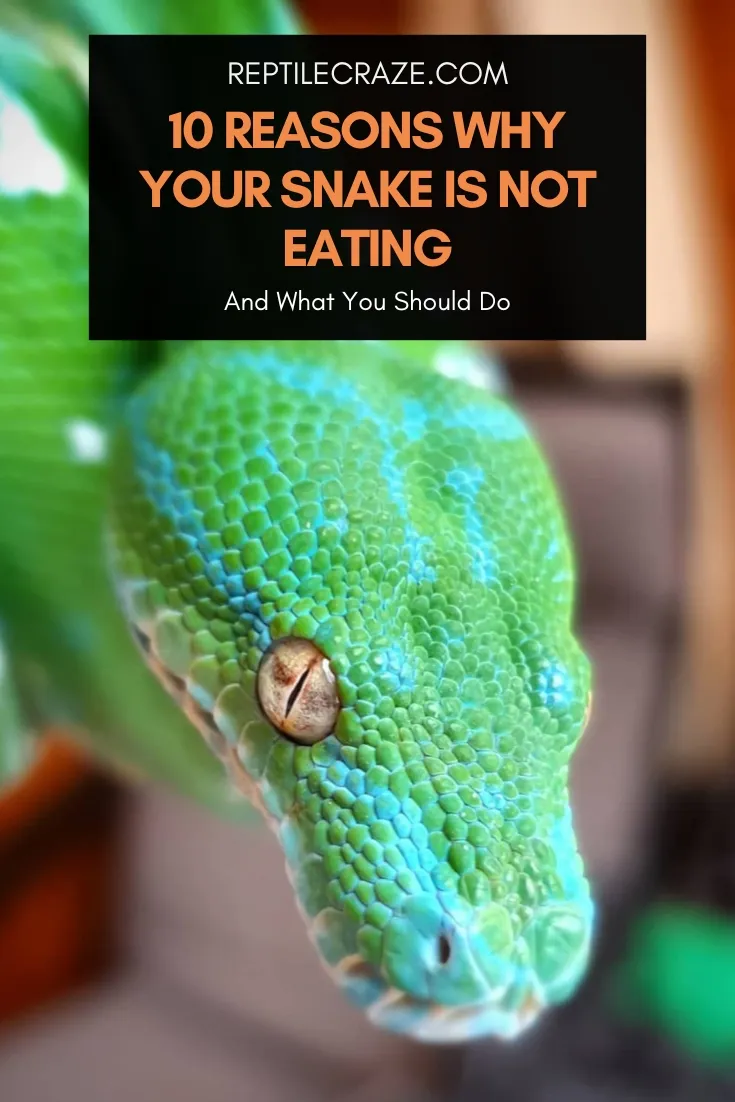
No matter the size or species of your pet snake, watching them enjoy their meal is very interesting. It’s well-known that most species of pet snakes don’t need to eat as often as we humans, but what are the reasons behind a pet snake not wanting to eat at all? And what can reptile carers do about it?
Common reasons for inappetence in pet snakes include; inappropriate
In this article, we’ll explain the most common reasons for lack of appetite (inappetence) in pet snakes, and we’ll also make suggestions as to what you can do to help. We’ll also highlight signs that your snake needs to see a reptile veterinarian.
So let’s get your snake’s appetite back again!
Table of Contents
Reasons For Inappetence In Pet Snakes
If your pet snake has refused a meal, there are a few things you should do before you start worrying.
Since inappropriate environmental conditions are a common cause of inappetence in snakes, their
It’s good to remember that a snake missing one meal but eating the next isn’t a cause for concern, inappetence in snakes requires further investigation if it happens more than once. So if it’s the first time your snake has refused a meal, try again another day before you start panicking.
Check and adjust the following parameters and components of the
- light cycle
- humidity
- UVB (if offered)
- A suitable substrate (such as aspen)
- temperature gradient and basking area
- A water bowl with fresh and clean water, large enough for the snake to climb into.
If all the above criteria are met, then you can begin to investigate another reason for your snake’s loss of appetite. In the next sections, we’ll go through some of these possible reasons and offer advice about how to rectify the situation.
Disclaimer: This article offers advice as a guide only. If you have a suspicion that your pet snake is sick, contact a reptile veterinarian for a proper diagnosis and treatment.
1. Stress
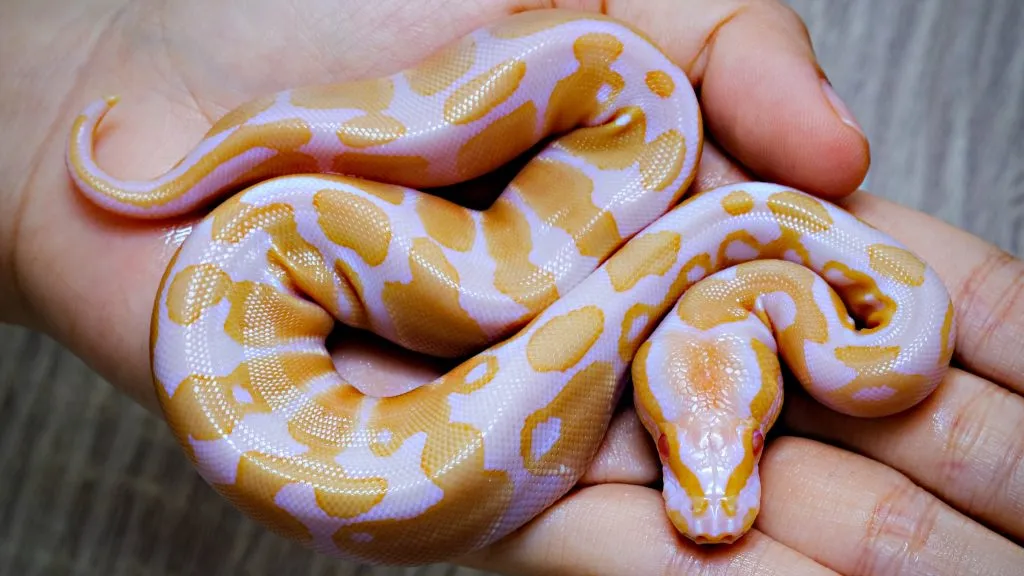
For captive pet snakes, stress is a common reason for them to go off their
Other scenarios which can provoke stress-induced inappetence in pet snakes include:
- Changes in routine
- Too much handling
- Changes in environmental parameters
- Moving their
tank to a new location - Introduction of new animals to the house.
What To Do About It
Below we’ve listed some tips to help keep your snake’s environment stable and reduce stress:
- Invest in thermostats to monitor and adjust the temperature to ensure it’s always appropriate
- Make any changes gradually and build up handling time slowly
- Ensure that you have a working hygrometer in the center of your snake’s
tank to monitor the humidity level - Ensure that your snake’s
tank is in a safe, quiet, and calm location away from the reach of other pets (snakes can feel self-conscious too!) - If you have to move your snake’s
tank , give them time to adjust to its new surroundings before feeding them - Only house 1 snake per
tank , they usually prefer to live alone (unless you want to mate them) - Think about putting some more objects in your snake’s
tank for them to hide and have some privacy.
You can read more about stress in snakes in our article ‘14 Signs That Show That Your Snake Is Stressed, And How To Help Your Snake‘.
2. Your Snake May Be Full
Most snakes don’t need to be fed as often or as much as other pets. If your snake is turning their nose up at their
What To Do About It
Feeding schedules vary between snake species, so refer to a reputable snake feeding guide for your specific species before you start to worry.
It may just be that the snake had a particularly big meal the previous feeding time, and needs more time to digest.
3. Your Snake Is About To Shed
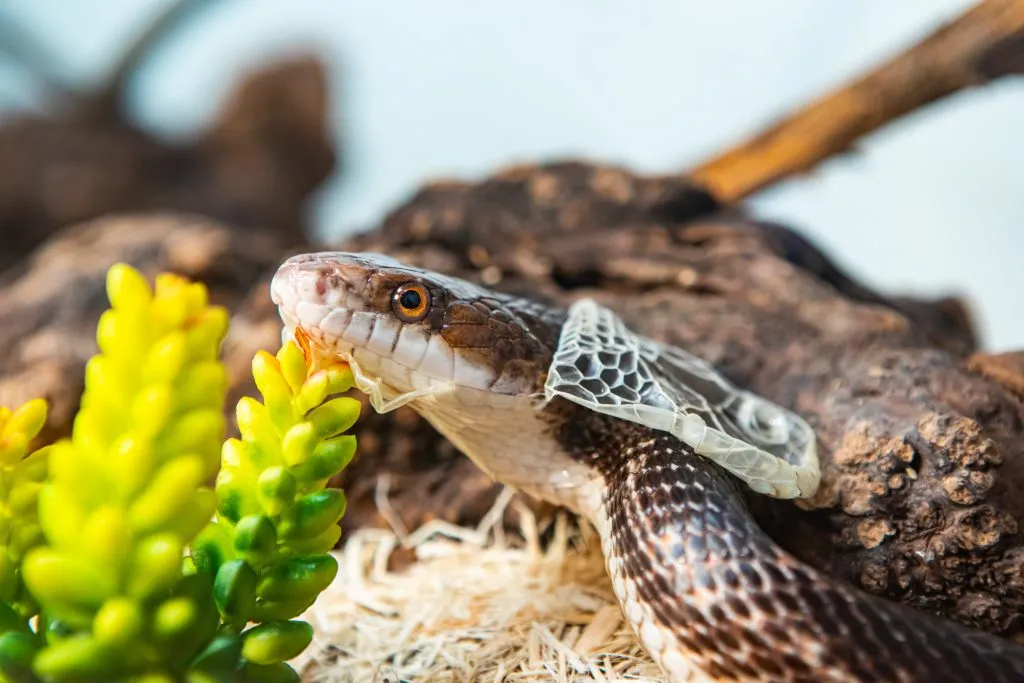
It’s normal for snakes to lose their appetite just before they start shedding. If this is the case, you’ll probably be able to see other signs such as:
- Reduced activity
- Staying in their humid hide
- Milky colored eyes
- A pale or blue appearance of its scales.
What To Do About It
Shedding is normal and completely physiological for snakes. The best thing to do if your snake is shedding is to leave them in peace.
Make sure that their environmental parameters are appropriate (humidity is especially important during shedding) and give them time to shed. They’ll most likely get their appetite back once they’ve finished.
Don’t forget to leave your snake enough time to shed completely before you start handling them again. You can read more about this topic in our article ‘Handling A Snake Before Or While Shedding, Is That A Good Idea?‘.
4. Your Snake Is Preparing To Brumate
Brumation is a time when a snake physiologically slows down and reduces their activity when their external environment gets colder and there is less daylight.
During brumation, snakes conserve their energy and prepare for possible reproduction.
Signs that your snake is undergoing brumation include:
- Reduction in activity level or hiding
- Staying in the same area for a long time (weeks)
- Only moving to drink
- Slowed breathing and heart rate
- Reduced appetite a few weeks prior.
What To Do About It
If your snake is healthy and in a suitable condition for undergoing brumation, do nothing!
Brumating snakes should not be fed under any circumstances, as it could be dangerous for the snake.
This is because the reduced body temperature of a snake during brumation means that it won’t be able to digest any
If you give a brumating snake
If for some reason, a brumating snake eats something, the brumation period should be ended by increasing the snake’s external temperature again so that normal digestive processes can resume.
You can read more about this topic in our article ‘Should A Snake Be Fed During Brumation?’.
5. The Food Isn’t Suitable For Your Snake
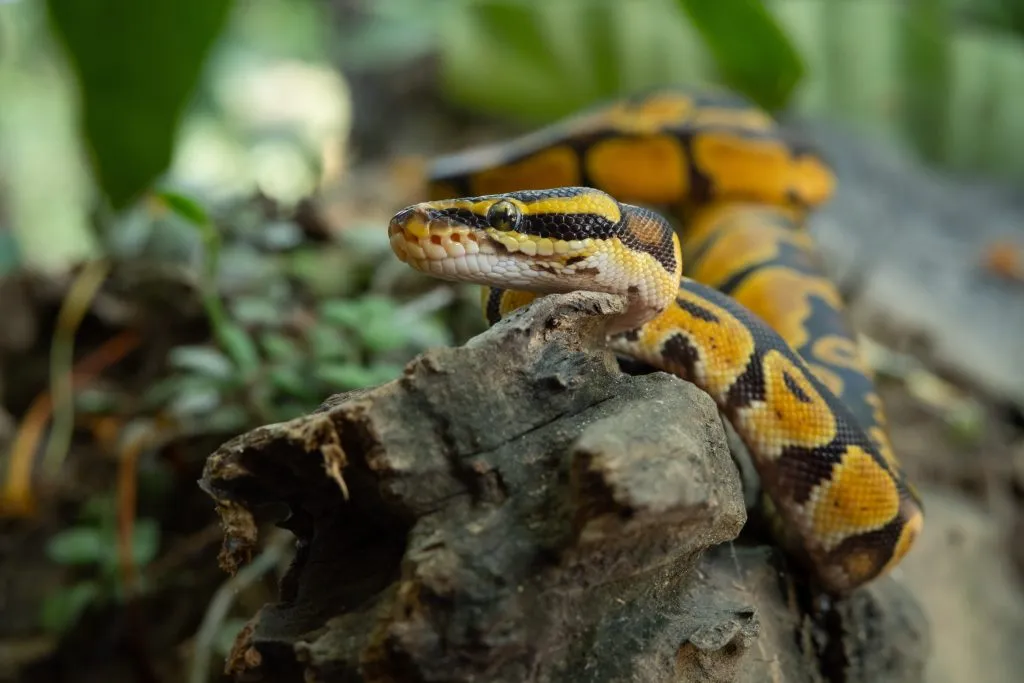
The chances are, if we humans are offered a
Whilst many pet snake diets involve frozen, thawed rodents such as mice or rats, not all species eat the same.
For example, the African egg-eating snake eats, you guessed it, eggs! As well as stress, incorrect feeding is one of the most important factors leading to disease (source).
What To Do About It
If your snake is uninterested in the
6. Your Snake Is Suffering From A Health Condition
Similarly, in humans, inappetence is often a non-specific sign of a health condition. Frustratingly, it doesn’t point to a specific source of disease. Inappetence is more a consequence of the proper functioning of the immune system.
We’ve listed some examples of health conditions that could cause inappetence in snakes below:
- Atadenoviruses
- Salmonellosis (be aware that your snake can pass this infection to humans too)
- Mouth rot (infectious stomatitis)
- Inclusion body disease
- Respiratory system infections
- Metabolic bone disease (rare in snakes).
- Egg binding in females
- Bites, burns, or wounds.
- Parasites
If you think that your snake could be suffering from one of the above conditions, it’s best to take them to a reptile veterinarian.
In the next section, we’ll explain some other signs of health conditions in snakes that could help you differentiate inappetence related to a health condition from another reason.
What To Do About It: When To Take A Snake With Inappetence To The Vet
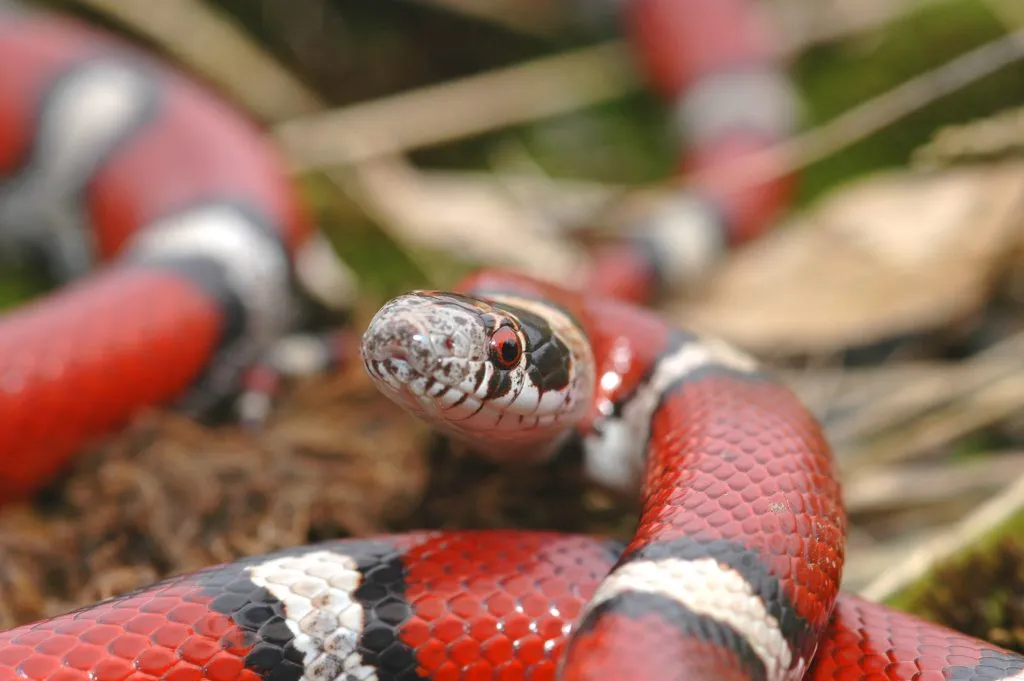
Usually, any type of infection (bacterial, viral, fungal, or parasitological) or health condition is best treated by a reptile veterinarian, so it’s best to take the snake for a proper diagnosis and treatment.
If possible, take a sample of your snake’s feces and urates with you to your consultation with a reptile veterinarian as they might want to test it.
Below, we’ve listed some signs which could accompany inappetence in snakes, and show that your snake probably needs to be checked by a reptile veterinarian (source):
- Change in behavior (such as decreased activity or being restless)
- Abnormal swellings or masses
- Less active than normal (unless brumating)
- Abnormal feces or urate
- Weight loss or poor condition
- Vomiting
- Difficulty breathing
- Wrinkly skin.
Disclaimer: Refer to the above list as a guide only. If you think your snake may be sick, it’s best to take them to a reptile veterinarian.
Tip: You can read more about illnesses in snakes in our article, ‘10 Signs That Your Snake Is Dying + How To Help‘.
7. Your Snake Is Bored Of This Food
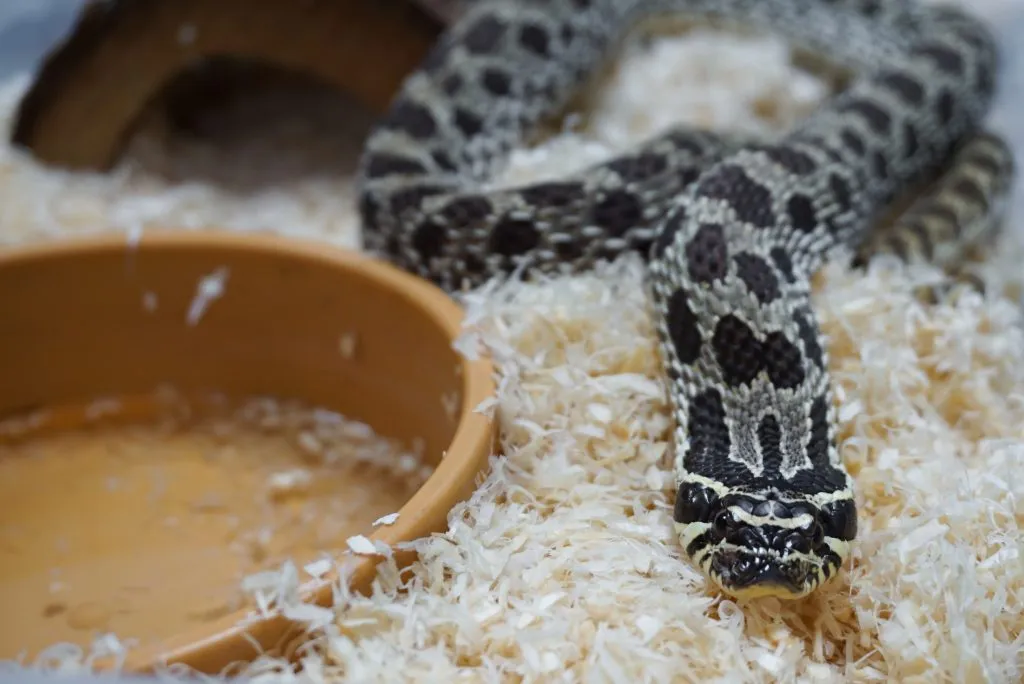
Captive snakes can become bored, especially if their environment isn’t very enriching.
Feeding time can be the perfect time to provide your snake with some enrichment and opportunity to express physiological behavior, such as striking.
If your snake is feeling particularly bored, it might even go off its
What To Do About It
Below we’ve listed some things you can do to keep your snake’s environment enriching and meal-time interesting:
- Think about adding some hides or branches to their
tank for them to explore - When feeding, move the prey item using soft reptile tongs and play a game for your snake to ‘hunt’ their prey (if your snake is a carnivore)
- Consider adding some variety (if possible) to your snake’s menu.
Remember, it’s best to only feed your snake already killed prey to reduce the risk of them becoming injured.
8. The Prey Item Is Too Cold
If your snake is a carnivorous species like the rosy boa or corn snake, you’ll most likely be feeding them defrosted, killed mice or rats.
As far as we know, snakes probably don’t particularly enjoy eating ice cream! So your snake’s lack of appetite could just be because their
What To Do About It
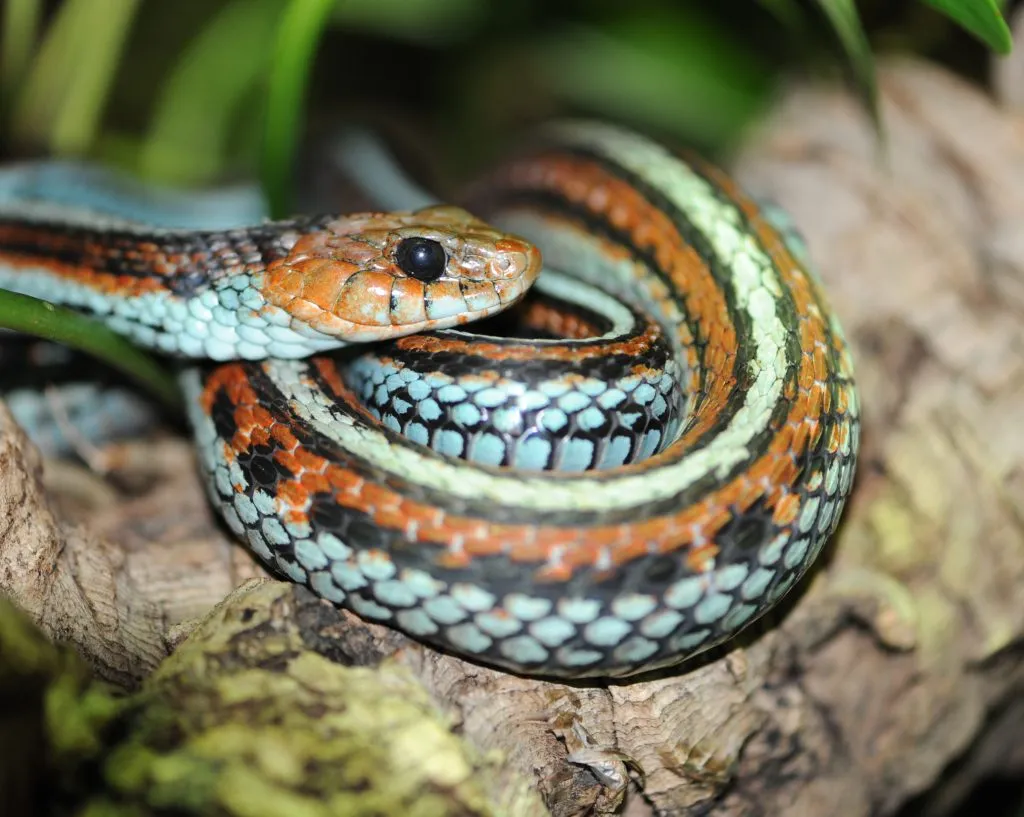
You can defrost pre-killed frozen prey items according to the following points (source):
- Refrigerator defrosting – put the item in the fridge overnight to thaw and they will be ready the next day.
- Cold water thawing – put the prey item in a secure zip-lock bag in cold water out of direct sunlight, and replace the water after 30 minutes (an adult rat will probably take 1 hour using this method).
Finally, after defrosting and before giving the prey to your snake, don’t forget to warm them in a bucket of warm water for around 20 minutes.
Handling already killed prey items is a risky business. Always be sure to wear gloves and wash your hands after contact with your snake’s
food .
Never attempt to thaw prey items in boiling water or at room temperature.
This is because harmful bacteria commonly present in dead animals can multiply at these temperatures and present a risk to you and your pet snake.
What about using the microwave?
Thawing prey items using a microwave is a risky business. It can be difficult to thaw the prey without cooking it.
We recommend you stick to using a fridge or cold water to defrost your snake’s
It’s also important not to use utensils or appliances used for preparing human
9. Your Snake Is Pregnant
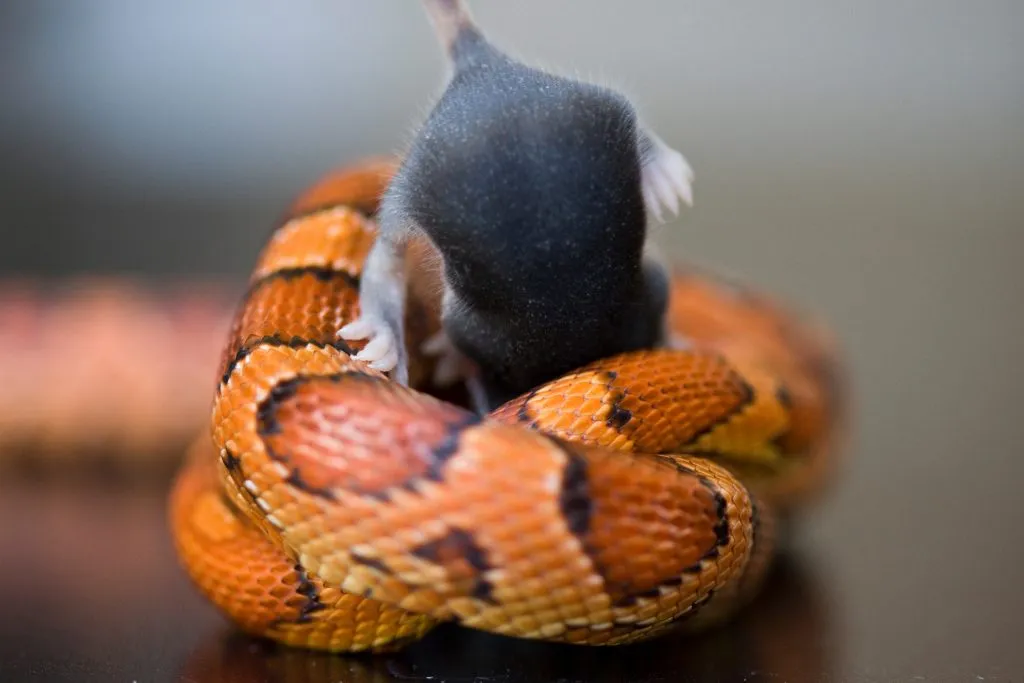
If your snake is female and a species that gives birth to live young (such as a garter snake), it could lose its appetite because they are pregnant.
According to this study, pregnant snakes can become anorexic, possibly as a physiological response to increase the chances of a successful birth.
By choosing to decrease their appetite (and need to search for
Apart from decreased appetite, other signs of pregnancy in snakes include:
- Your snake’s color may appear brighter (Pregnancy Glow)
- Your snake might spend more time in the cool zone than usual
- Lumps in the mid-section
- Higher aggression
- Your snake might lay more often in the water bowl
What To Do About It
If you intended for your snake to become pregnant, then you can crack open the champagne!
You also might want to consider taking the snake to a reptile veterinarian to check the fetus using an x-ray or ultrasound.
10. Egg Binding Or Dystocia

If your snake is female and recently mated, then it may be suffering from egg binding or dystocia (difficult birth).
It’s pretty common and can be life-threatening. Factors that can contribute to egg binding or dystocia in snakes include (source):
- improper UV lighting
- inappropriate
tank temperature or humidity - Too small sized nest
- Malnutrition
- Dehydration
- Physical abnormalities (involving the reproductive system)
- Concurrent infections
- Abnormal eggs.
Whether you’re expecting your snake to give birth to live young, or to eggs, the signs of dystocia or egg binding look pretty similar and both require veterinary attention.
Since healthy pregnant snakes can also have reduced appetite, it could be difficult to differentiate a female snake with dystocia or egg binding from a healthy snake.
Did you know that it’s normal for a female snake to ‘shake‘ when she lays her eggs?
Generally, the best thing to do if you intend to breed your snake is to have her examined by a reptile veterinarian and to monitor her so you know when to expect her to deliver the live young snakes or eggs.
This way, you can recognize problems early and treat them before they get serious.
Conclusion
After reading this article, you’ll be able to differentiate the different reasons for inappetence in a snake, what to do about them, and when to seek veterinary advice.
If you want to read more about healthy snake eating habits, read our article ‘How Long Can Snakes Go Without Eating?’.
Have you experienced another situation where your snake didn’t want to eat? Tell us about it in the comments below!
- Enchi Ball Python: A Unique and Stunning Morph of Python regius - March 27, 2025
- Emerald Tree Monitor: The Enigmatic Green Guardian of the Rainforest - March 26, 2025
- The Egyptian Cobra (Naja haje): A Fascinating Serpent - March 25, 2025
